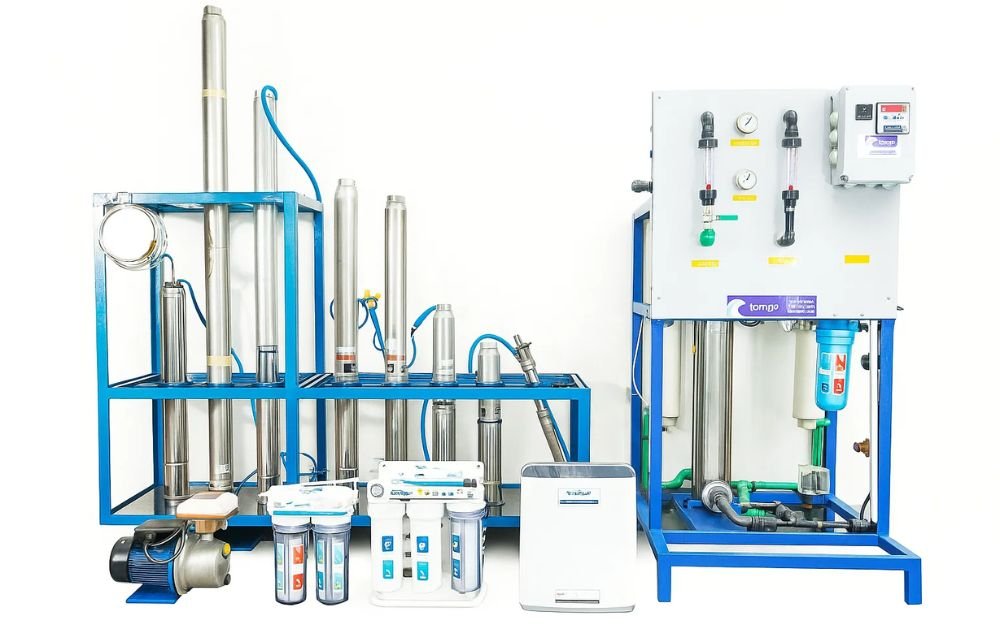What Are Drinking Water Contaminants?
Contaminants in drinking water are substances—either biological, chemical, or physical—that can cause harm to human health. They may enter water supplies through natural processes like erosion or human activities such as industrial discharge, agricultural runoff, and sewage leakage.
These contaminants are typically categorized into four groups:
- Microbiological Contaminants
- Chemical Contaminants
- Heavy Metals
- Physical Contaminants
Let’s explore each type and the methods available to remove them.
1. Microbiological Contaminants
Examples: Bacteria (e.g., E. coli), viruses, protozoa, and parasites
Sources: Contaminated surface water, untreated sewage, animal waste
Microorganisms are among the most dangerous contaminants, causing waterborne diseases like cholera, dysentery, and typhoid. They are especially prevalent in regions lacking proper sanitation and sewage systems.
How to Remove Them:
- Boiling: A simple method for killing most pathogens.
- Chlorination: Chlorine is effective at disinfecting water but must be used in controlled quantities.
- UV Treatment: Ultraviolet light disrupts the DNA of microorganisms, rendering them harmless.
- Reverse Osmosis (RO): This advanced method removes nearly all types of pathogens when used with a suitable membrane.
2. Chemical Contaminants
Examples: Pesticides, herbicides, industrial solvents, nitrates
Sources: Agricultural runoff, factory waste, landfills
Chemical pollutants often go unnoticed because they don’t alter the taste or color of water, yet they can cause long-term health issues, including cancers, reproductive problems, and developmental disorders.
How to Remove Them:
- Activated Carbon Filters: Effective in absorbing organic compounds and pesticides.
- RO Systems: Provide excellent removal of a wide range of chemical contaminants.
- Ion Exchange: Useful in removing nitrates and other dissolved substances.
- Advanced Oxidation: Combines ozone, UV, or hydrogen peroxide to neutralize difficult chemical compounds.
3. Heavy Metals
Examples: Lead, arsenic, mercury, cadmium
Sources: Corroded pipes, industrial waste, mining activities
Heavy metals are highly toxic even in small amounts and accumulate in the body over time, potentially leading to organ damage, neurological issues, and cancer.
How to Remove Them:
- Distillation: Boils water and condenses the steam, leaving heavy metals behind.
- Reverse Osmosis: RO membranes effectively block most heavy metals.
- Ion Exchange Resins: Specifically designed to remove metal ions from water.
- Activated Alumina: Particularly effective against arsenic and fluoride.
4. Physical Contaminants
Examples: Sediment, dirt, rust, organic matter
Sources: Surface water sources, broken pipelines, construction runoff
These are the most visible contaminants, often causing discoloration and an unpleasant taste or smell in water. While not always harmful, they can be a sign of larger contamination issues.
How to Remove Them:
- Sediment Filters: First line of defense in any water filtration system.
- Multi-media Filters: Combine layers of sand, gravel, and anthracite to remove particles.
- Micron Filters: Designed to capture very fine particles that sediment filters may miss.
The Role of Water and Sewage Infrastructure
Clean water isn’t just about filtration—it requires a strong infrastructure that includes efficient wastewater treatment, proper sewage disposal, and ongoing monitoring. Without these systems, even the best household filters can’t protect communities from waterborne threats.
This is where reliable water and sewage solutions Uganda become essential. Addressing the root causes of water contamination—such as open defecation, untreated industrial waste, and poor drainage—requires expertise, planning, and modern technology.
Sustainable Water Management Practices
To ensure long-term access to safe drinking water, communities and businesses should adopt the following practices:
- Rainwater Harvesting: Collects and stores rainwater for non-potable uses, reducing pressure on drinking water sources.
- Wastewater Recycling: Treats sewage for reuse in irrigation or industrial applications.
- Community Education: Teaching people about hygiene, sanitation, and proper water storage techniques.
- Regular Testing: Ensures early detection of contaminants and prevents the spread of disease.
A well-rounded water management system combines prevention, treatment, and education to protect water quality at every level—from source to tap.
Conclusion: Partner with Blackwood Hodge Ltd for Trusted Water Solutions
Accessing clean water should not be a luxury. With the growing demand for effective water and sewage solutions Uganda, it’s important to choose partners who combine technology, local expertise, and a commitment to public health. Blackwood Hodge Power Services Ltd shines in this regard, offering reliable, innovative, and scalable solutions tailored to Uganda’s water management challenges. Whether you’re addressing contamination at the household level or planning infrastructure for a growing community, Blackwood Hodge Ltd delivers sustainable systems that truly make a difference.


